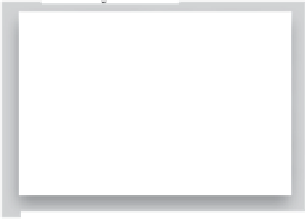Graphics Programs Reference
In-Depth Information
Lightroom Killer Tips
> >
(Lightroom, though, gives you the
option of deleting the original RAW
file when you make the conversion.
This is what I choose, since the DNG
can include the RAW photo within it).
includes your metadata, and keeps
your file structure, as well.
▼
Save Time Importing into
Existing Folders
▼
Choosing Keywords
Here's how I choose my keywords:
I ask myself, “If months from now, I was
trying to find these same photos, what
words would I most likely type in the
Find field?” Then I use those words.
It works better than you'd think.
▼
Organizing Your Images
in Folders
If you're going to import some photos
into a folder you've already created, just
go to the Folders panel in the Library
module, Right-click on the folder, and
choose
Import into this Folder
from
the pop-up menu. This brings up the
Import window with this folder already
chosen as the destination for your
imported photos.
▼
Now You Can Import and
Edit PSDs and more!
In previous versions of Lightroom, you
could only import and edit RAW images,
TIFFs, and JPEGs, but in Lightroom 3,
you can now import PSDs (Photoshop's
native file format), along with images in
CMYK mode or Grayscale mode.
You get to choose how your images are
organized, as they're imported, in the
Destination panel. If you don't turn on
the Into Subfolder checkbox and you
choose Into One Folder from the Orga-
nize pop-up menu, Lightroom tosses
the loose photos into your Pictures or
My Lightroom Photos folder (whichever
folder you chose in the To section at the
top right of the Import window), and
they're not organized within their own
separate folder. So, if you choose the Into
One Folder option, I recommend that you
turn on the Into Subfolder checkbox and
then name the folder. That way, it imports
them into their own separate folder inside
your Pictures or My Lightroom Photos
folder. Otherwise, things will get very
messy, very quickly.
▼
Ejecting Your Memory Card
▼ Converting Photos to DNG
If you didn't choose Copy as DNG at
the top center of the Import window,
and you want your imported photos
saved in this file format, you can always
convert any photo you've imported into
Lightroom into a DNG by just clicking
on the photo(s), going to Lightroom's
Library menu, and choosing
Convert
Photo to DNG
(although, technically,
you can convert JPEGs and TIFFs into
DNG format, converting them into DNG
doesn't really offer any advantages, so
I only convert RAW photos to DNG). This
DNG replaces the RAW file you see in
Lightroom, and the RAW file remains
in the same folder on your computer
If you decide not to import anything and
want to eject your camera's memory
card, just Right-click directly on it in
the Import Window's Source panel,
then choose
Eject
from the pop-up
menu that appears. If you pop in a new
card, click on the From button at the top
left of the window, and choose it from
the pop-up menu that appears.
▼
Lightroom 3 Handles
Yo u r B a c k u p B e t te r
In previous versions of Lightroom,
when you copied images to a backup
hard drive, it didn't include any custom
file names, or metadata, or keywords
that you added—it just made an exact
copy of what was on the memory card.
Now, it renames these second copies,


































